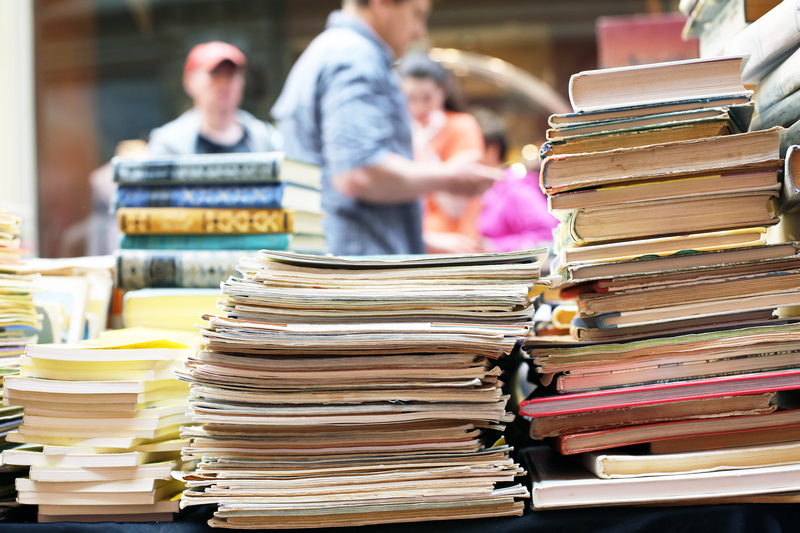Pioneering Cardboard Disposal in Eco-Packaging
In the modern era of environmental awareness, eco-friendly packaging solutions are paramount for businesses and consumers alike. Among various packaging materials, cardboard stands out as an easily recyclable and biodegradable contender. However, the journey toward effective cardboard disposal in eco-packaging is constantly evolving, with new technologies and processes emerging to minimize environmental impact. In this comprehensive article, we will delve deeply into the methods, challenges, and innovations that make cardboard waste management a cornerstone of sustainable practices in packaging.

Understanding Cardboard's Role in Eco-Packaging
Cardboard has long been favored for packaging due to its renewable origins, structural integrity, and cost-effectiveness. As the global movement towards sustainability gains momentum, the need for pioneering cardboard disposal methods is more relevant than ever.
Why Is Cardboard Packaging So Popular?
- Renewable Resource: Cardboard is derived from trees, a renewable source when managed responsibly.
- High Recyclability: Nearly all cardboard products can be recycled multiple times without significant loss of quality.
- Biodegradability: Unlike plastics, cardboard breaks down naturally, minimizing long-term pollution.
Its popularity, however, brings about the challenge of efficient cardboard disposal, necessitating novel approaches to processing, recycling, and repurposing in the context of eco-packaging.
The Environmental Impact of Cardboard Waste
Despite its eco-friendly image, improper management of cardboard waste can pose environmental problems:
- Landfill Overload: When cardboard isn't recycled, it occupies significant landfill space, contributing to methane production as it decomposes anaerobically.
- Use of Virgin Materials: High demand sometimes motivates unsustainable forestry practices.
- Resource and Energy Use: Even the recycling process incurs an environmental cost if not managed properly.
That's why pioneering efforts in cardboard disposal are essential for the evolution of eco-packaging.
Innovative Cardboard Disposal & Recycling Solutions
Advancements in cardboard recycling technology are revolutionizing the disposal process and redefining what's possible in eco-friendly packaging disposal. Let's explore the latest innovations:
1. Advanced Recycling Facilities
Modern recycling centers use automated systems--optical sorters, air classifiers, and advanced balers--to streamline the collection and processing of post-consumer cardboard. This results in higher-quality recycled fiber and reduces contamination.
2. Localized Composting Programs
Certain communities are implementing composting initiatives that accept clean cardboard. When composted, cardboard enriches soil and reduces landfill dependence. Home composters are also encouraged to break down plain cardboard for personal gardens.
3. Upcycling Cardboard Waste
- Creative Reuse: Many companies and artists repurpose cardboard for furniture, decorations, or building materials.
- Industrial Insulation: Processed cardboard scraps are now being used as an eco-friendly insulation alternative.
- Educational Materials: Schools and community centers turn old cardboard boxes into learning or art supplies.
4. Biodegradable Coatings
A frequent obstacle in recycling cardboard lies in wax or plastic coatings used to make packaging moisture-resistant. New biodegradable coatings--derived from corn starch or clay--allow for easier recycling and composting without toxic residue, optimizing eco-packaging disposal.
5. On-site Cardboard Shredders
To reduce bulk and facilitate recycling, businesses deploy shredders that convert used cardboard into void fill for packaging or compost additives. This on-site process reduces the need for transportation and streamlines sustainable cardboard waste handling.
Best Practices for Sustainable Cardboard Disposal
Proper disposal goes beyond simply tossing cardboard in the blue bin. Here are the fundamental steps and strategies organizations and individuals should adopt:
Preparation for Disposal
- Remove Contaminants: Separate cardboard from plastics, food residue, and wax coatings, which can hinder recycling and composting.
- Flatten Boxes: This maximizes space and simplifies handling during collection and transportation.
- Keep Dry: Wet or soiled cardboard is often unrecyclable. Store and dispose of cardboard in dry conditions whenever possible.
Participation in Local Programs
Support municipal recycling by adhering to local guidelines for sorting and disposing of cardboard. Many cities have adopted single-stream systems that make recycling easier but still require attention to contamination.
Partnering with Sustainable Packaging Providers
- Eco-Packaging Standards: Work with suppliers who use recycled materials and design for easy end-of-life processing.
- Take-back Programs: Engaging in closed-loop delivery-inspection-return schemes ensures more cardboard is properly processed.
By integrating these strategies, both businesses and consumers promote a circular economy for cardboard.
Challenges in Cardboard Recycling and Disposal
While the benefits are clear, several obstacles remain in mastering eco-friendly cardboard disposal:
- Contaminated Cardboard: Boxes tainted with oil, grease, or chemicals are unsuitable for most recycling streams.
- Composite Packaging: Products combining cardboard with other materials frequently end up in landfills due to separation difficulties.
- Global Supply Chain Complexity: Cardboard waste generated in less-developed regions often lacks proper recycling infrastructure.
- Consumer Awareness: Not everyone understands how to best dispose of cardboard packaging, leading to high rates of improper disposal.
How Can These Challenges Be Addressed?
Resolving these issues calls for a multisectoral approach involving government regulations, private sector innovation, and widespread education. Programs targeting contaminant reduction, implementing simpler packaging designs, and growing global recycling partnerships are paving the way.
The Future of Cardboard Disposal in Eco-Packaging
Cardboard packaging is not going anywhere soon, but how we manage its disposal will continue to evolve. Here's what the future might hold as we further pioneer cardboard disposal in eco-packaging:
Smart Packaging Technologies
- Embedded Trackers: Some forward-thinking manufacturers already embed RFID chips to trace cardboard packaging from production to disposal, ensuring it reaches appropriate recycling facilities.
- Anti-Contaminant Barriers: New micro-coatings can make cardboard resistant to contamination while remaining fully recyclable.
Zero-Waste and Circular Initiatives
- Closed-Loop Systems: Major retailers experiment with systems in which packaging is collected from end-users for direct reuse or reprocessing.
- Deposit-Return Programs: Like glass or aluminum, cardboard deposit systems could incentivize users to return packaging for responsible disposal.
Policy and Global Collaboration
International standards and regulations, such as the EU's Packaging and Packaging Waste Directive, are acting as catalysts for harmonized cardboard waste management approaches worldwide.
Consumer Education Initiatives
Nothing underscores the success of eco-packaging disposal more than informed consumers. Brands and municipalities invest in comprehensive outreach to guarantee the highest possible cardboard recycling rates and minimal contamination.
Case Studies: Brands Leading the Way in Cardboard Disposal
Several brands and logistics companies have become trendsetters in effective cardboard waste solutions:
- Amazon: Through its "Frustration-Free Packaging" initiative, Amazon encourages suppliers to use simple, 100% recyclable cardboard packaging, reducing both material use and disposal complexity.
- IKEA: The global furniture giant has revamped its packaging strategy, opting for modular, recycled cardboard designs that maximize transport efficiency and facilitate recycling in all markets.
- Loop by TerraCycle: This innovative reuse platform includes cardboard shippers specially designed to be returned, sanitized, and reused repeatedly--culminating in a zero-landfill solution.
These pioneers offer practical models for how thoughtful packaging design and end-of-life planning can foster sustainable cardboard management.

Tips for Businesses: Optimizing Cardboard Disposal in Eco-Packaging
- Track Packaging Lifecycle: Use data analytics to monitor cardboard packaging flows and identify efficiency gains in waste management.
- Design for End-of-Life: Avoid multi-material packaging. Stick to pure, single-stream cardboard constructions for maximal recyclability.
- Engage in Manufacturer Responsibility Programs: Take ownership for post-consumer packaging by collaborating with recycling stakeholders.
- Educate Customers: Provide clear instructions and incentives for responsible disposal or return of cardboard packaging.
Conclusion: Creating a Greener Future Through Pioneering Cardboard Disposal
Cardboard is an integral part of our consumption-driven world, but with innovative cardboard disposal strategies, it can remain a sustainable packaging solution for generations. By embracing technological advancements, best practices, and consumer education, we make great strides toward a waste-free supply chain. As we continue to pioneer cardboard disposal in eco-packaging, the combined commitment of individuals, businesses, and policymakers will ensure that our packaging choices support the health of the planet for years to come.
Let us all champion smarter, greener cardboard disposal methods and be part of the global shift to truly sustainable packaging.